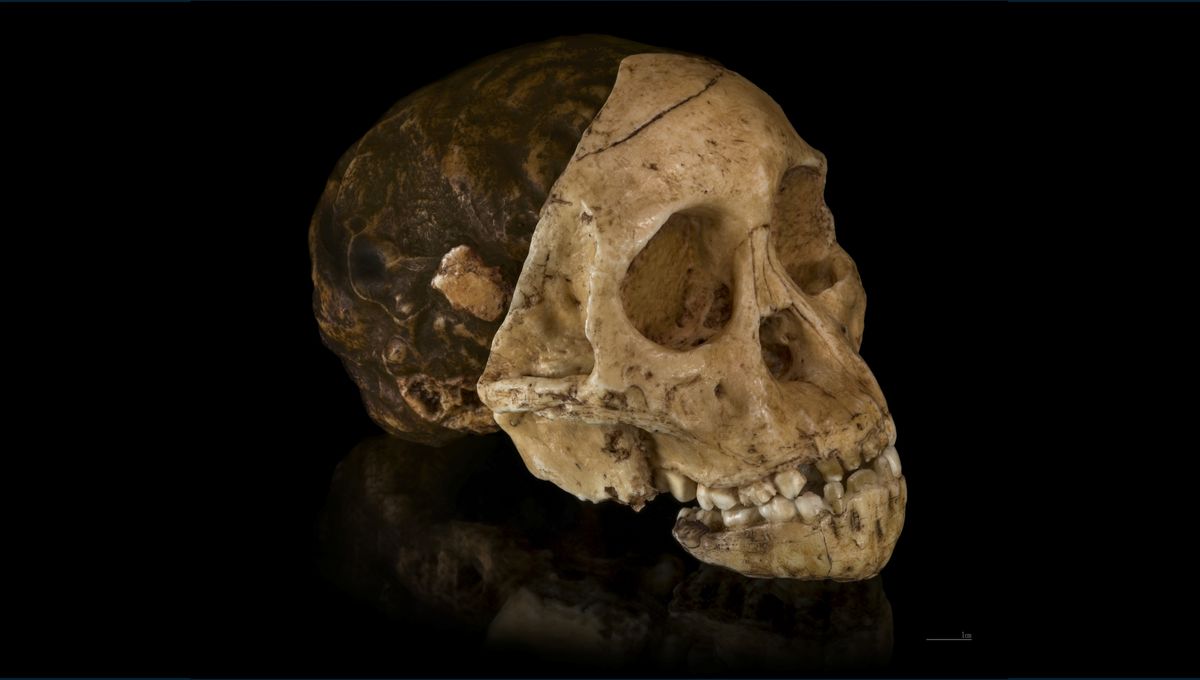
The date was February 3, 1925. The Star, a daily South African newspaper, featured a story on an exciting scientific discovery – the fossilized skull of a species with a mixture of human-like and ape-like features. The anthropologist who analyzed the fossil, dubbed the Taung Child, believed it was an ancestor of modern-day humans – but it would be another 20 years before he would be widely believed.
ADVERTISEMENT GO AD FREE
Raymond Dart – the anthropologist in question, who also happened to be a professor in anatomy – had been sent the skull the previous year. It had been unearthed in a limestone quarry near the village of Taung, South Africa, and was still partly encased in rock when Dart received it.
After carefully chipping away the excess limestone and analyzing the uncovered skull, he found that it was missing certain features that were present in living ape species, while having a jawbone, teeth, and an eye socket to forehead transition that all appeared to be “remarkably” human-like. Its teeth also led Dart to determine that the skull belonged to a child.
In a report published in Nature four days after the newspaper article, Dart concluded that “the specimen is of importance because it exhibits an extinct race of apes intermediate between living anthropoids and man.”
In other words, he believed it to be a so-called “missing link” in the family tree between living apes and Homo sapiens. Dart named the species Australopithecus africanus and if he were correct about its origins, the Taung Child would be the first fossil of a human ancestor to be found in Africa and the first of its genus.
However, the anatomist’s conclusion was met with a hefty amount of resistance.
While modern-day scientists now tend to agree that A. africanus might be a side branch in human evolution rather than being a direct ancestor of H. sapiens, that’s not why scientists back in the 1920s were challenging Dart’s conclusion.
ADVERTISEMENT GO AD FREE
One reason was that scientific racism was rife; although Charles Darwin had hypothesized that Africa was the “cradle of humankind”, many scientists were firm in their belief that humans had to have arisen in Europe or Asia.
“The general thought of the time was that Africa was sort of backwards,” anthropologist and National Geographic Explorer Keneiloe Molopyane told National Geographic. “So why would you find human origins in such a place?”
Instead, many had hedged their bets on Piltdown Man, the apparent remains of a human ancestor from 500,000 years ago that had been found in an English village.
But as time went on, the evidence began to stack up. Robert Broom, a doctor and anthropologist who had supported Dart back in 1925, would end up discovering further fossil specimens of A. africanus in 1947, including the famous “Mrs Ples”. Anatomist Arthur Keith, once one of the biggest critics of Dart and the Taung Child, even admitted to being wrong, such was the weight of the evidence presented.
ADVERTISEMENT GO AD FREE
Ultimately, the last laugh went to Dart. In 1953, Piltdown Man, the specimen that for many had justified the denial of the Taung Child’s importance, was revealed to be a fake.
Source Link: The Taung Child: 100 Years Ago, A “Missing Link” Between Humans And Apes Was Revealed